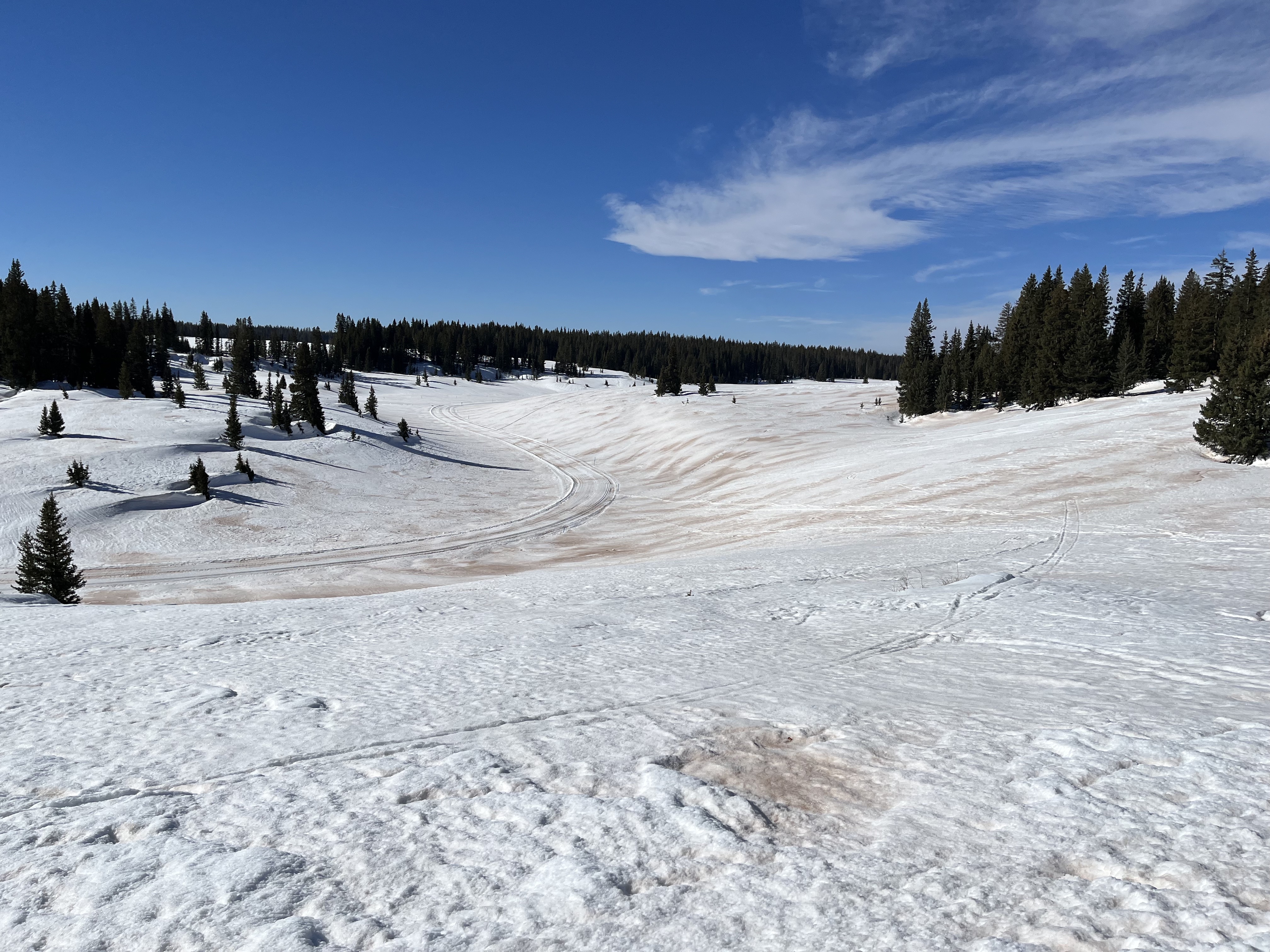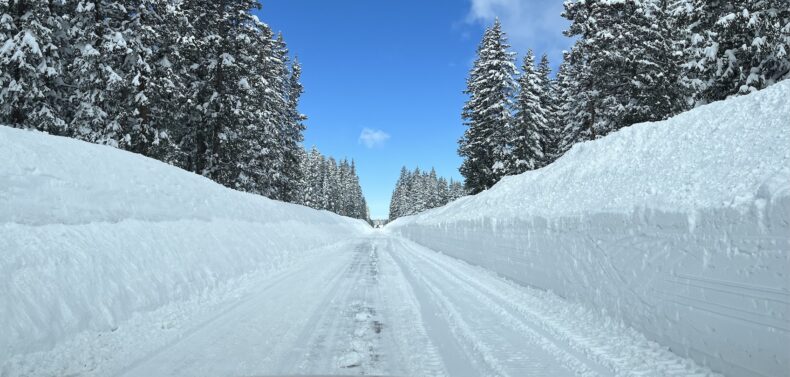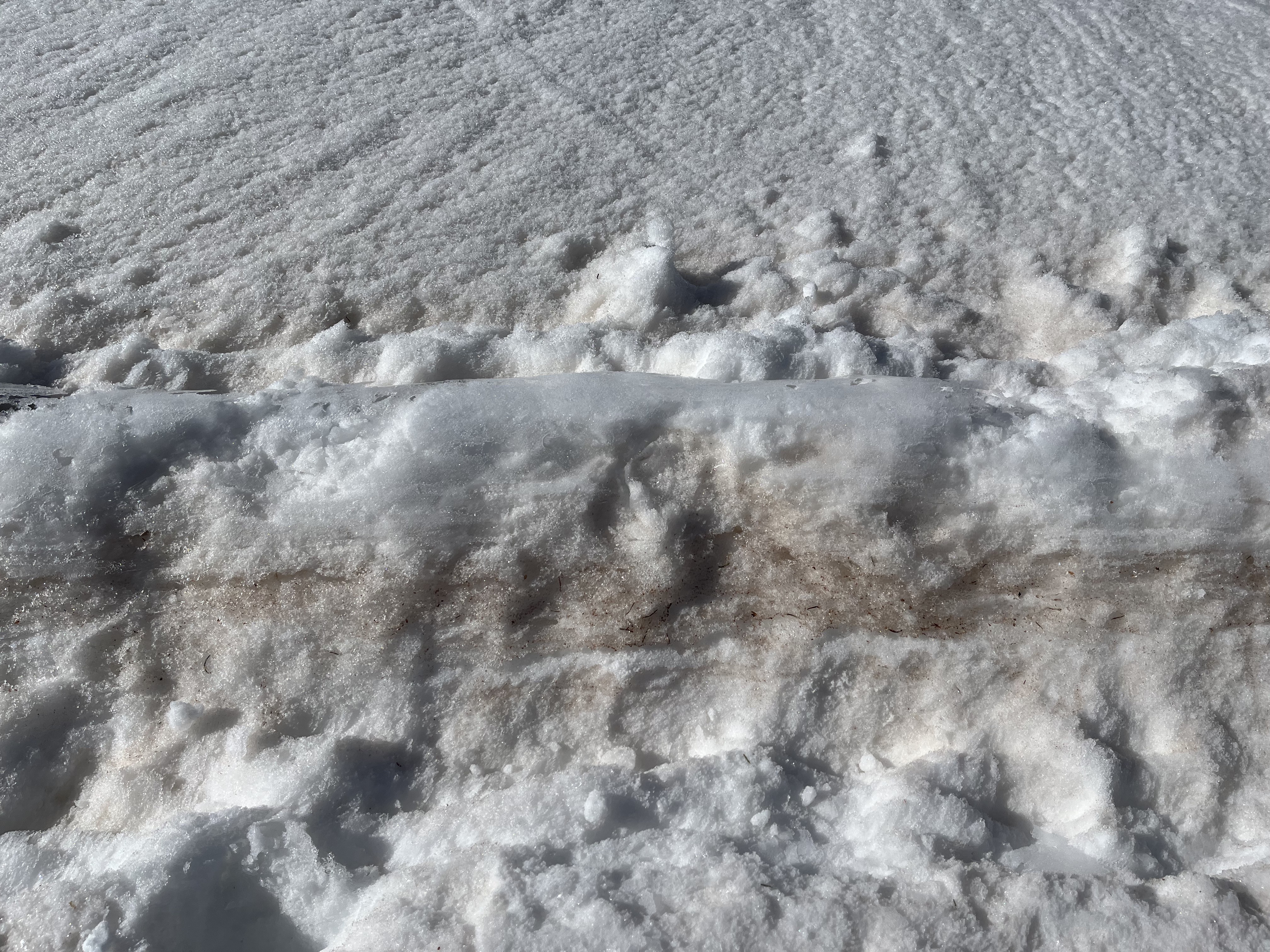
I live in Western Colorado, where we’ve had an absolutely EPIC winter. At the Skyway cross-country ski trailhead on the Grand Mesa, we’ve measured more than 450 inches of snow this winter, compared to our seasonal average of about 290 inches. Our 10 foot high snow measuring stake was buried this winter — that’s how tall our snowpack got.

All of this should have set us up for a long and spectacular spring ski season, but then the dust came. On April 3rd, a dust storm from the desert Southwest made its way to Colorado. On that windy day, I stood in my front yard and watched an apocalyptic cloud of dust blow in from the southwest. It was dark and dirty and shrouded in dread.
Dust is disastrous for skiers. It makes the snow abrasive and pockmarked and it can ruin the surface for skiing. Our beautiful snowpack was about to be covered in a layer of dust. The consequences are severe, and not just for skiers. “This one dust event is going to change the characteristics of snow melt and runoff for the duration of spring dramatically,” according to a report put out by the Center for Snow and Avalanche Studies on April 6.
The report described the April 3 “dust on snow” (DOS) event as “nasty” and “widespread” (it extended from Southwest Colorado all the way north to Steamboat Springs). Most of the state’s mountain areas had just reached maximum snow accumulation for the season, and now the pristine snowpack was going to be irrevocably changed.

Dust is darker than snow, so it intensifies melting from solar radiation, speeding snowmelt and creating an earlier spring runoff. DOS events “introduce a level of uncertainty into managing water supplies,” according to the Colorado Water Conservation Board’s Colorado Water Plan.
The plan goes on to explain that, “Studies have shown that dust events can advance snowmelt timing, enhance snowmelt runoff intensity, and decrease snowmelt yields. Dust-on-snow events can result in peak runoff three weeks earlier than normal. This shift is independent of climate change, which may also result in earlier snowmelt patterns.”
There’s no easy way to reduce DOS events. Restoring soil health in drought-strained areas would help, as would reducing human activities that kick up dust. The stakes are high. According to the Colorado Water Plan, “If these DOS “events continue at recently observed rates, they will affect Colorado’s present and future water supply.”
DOS events could also further erode the ski season in Colorado, which is already being shortened by climate change. It could be worse though. Parts of Europe have had so little snow that World Cup ski races have been held on tiny ribbons of human-made snow. Here in Western Colorado, we’ve had spectacular amounts of snow this season, which began on the Grand Mesa in mid-October. So we’ll enjoy the great snow for now, and hope that this isn’t the last great season. Even if spring skiing isn’t what it could be, we’ve had a long season with great conditions. On April 14, we got 13 inches of fresh, white snow, which covered the dust layer (for now). I plan to enjoy it while it lasts.